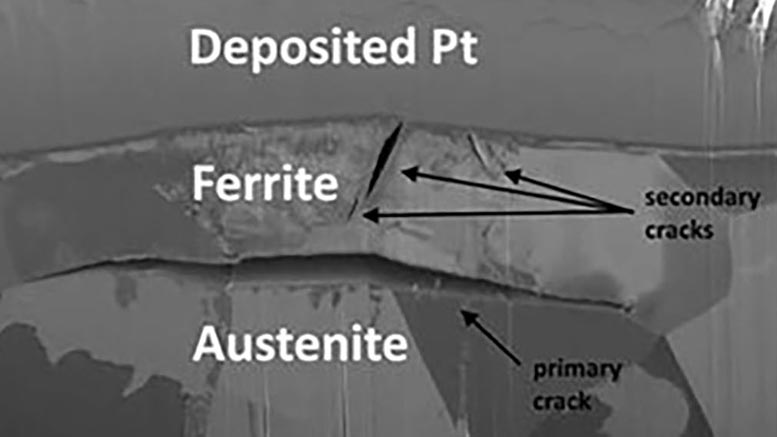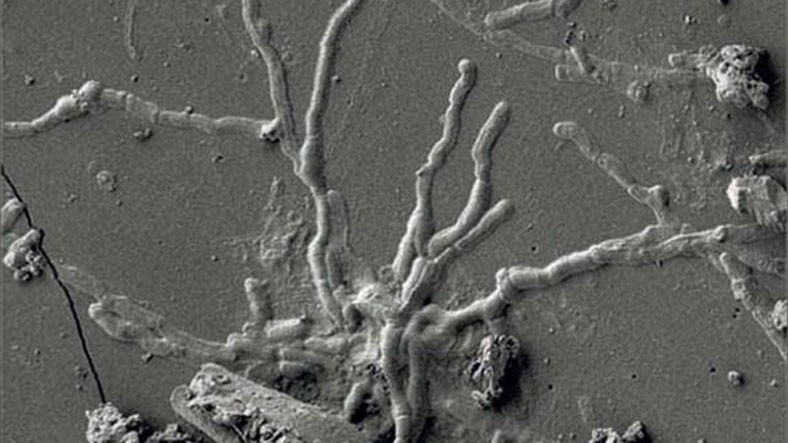Hydrogen can cause brittleness in several metals, including ferritic steel. However, recent advances provide insight into the embrittlement process. a) The arrowhead-shaped delaminations in stainless steel show cracks with significantly higher deuterium concentrations. b) Secondary ion cross-sectional profile for such a delamination. Photo credits: O. Sobol, G. Holzlechner, G. Nolze, T. Wirth, D. Eliezer, T. Boellinghaus and WES Unger
Methods show understanding the position of hydrogen in ferritic steels.
As the global energy market shifts from coal, oil and natural gas to more environmentally friendly primary fuels, hydrogen becomes a crucial pillar in the clean energy movement. The development of safe and inexpensive methods of storing and transporting hydrogen is essential given the interaction of hydrogen with structural materials, but it is complicated.
Hydrogen can cause brittleness in several metals, including ferritic steel – a type of steel used in components of buildings, gears and axles for automobiles, as well as in industrial plants. Recent advances in experimental tools and multi-scale modeling offer early insights into the embrittlement process.
An overview of different methods published in Applied Physics Reviewsfrom AIP Publishing has improved understanding of the structure, properties, and performance of ferritic steels that are subjected to mechanical stress in a hydrogen environment. While there are many studies on stainless steel, researchers focused on ferritic steel, a cheaper steel used in the construction of pipelines and other large structures.
“Determining the location of hydrogen in the host metal is the million dollar question,” said May Martin, one of the authors.
In particular, understanding where the hydrogen is exposed to stress in a bulk material is crucial for understanding embrittlement.
“We haven’t answered that question, but combining techniques brings us closer to that answer,” said Martin.
The researchers highlighted various combinations of techniques and methods, including atom Probe tomography. APT is a measurement tool that combines a field ion microscope with a mass spectrometer to enable 3D imaging and measurements of chemical composition at the atomic level, even for light elements like hydrogen.
Other techniques that hold promise are 2D mapping using secondary ion mass spectrometry to answer the question of where hydrogen is in a material. Ion mass spectrometry is a technique for analyzing the composition of solid surfaces and thin films by sputtering the surface of the sample with a focused primary ion beam and collecting and analyzing the ejected secondary ions.
The researchers said that just in the last decade, great strides have been made in hydrogen embrittlement thanks to the development of new experimental skills. As new experimental techniques are refined, the field is expected to develop at a remarkable pace.
“As the field expands, we hope our paper will be a good resource for those who come into the field,” said Martin.
Reference: “Hydrogen Embrittlement in Ferritic Steels” by May Ling Martin, Matthew Connolly, Frank W. DelRio and Andrew Slifka, October 6, 2020, Applied Physics Reviews.
DOI: 10.1063 / 5.0012851



